
Oakleaf Hydrangea Propagation: Step-by-Step Guide
Learn how to master oakleaf hydrangea propagation with this step-by-step guide. Discover the best methods, timing, and care tips to grow healthy Hydrangea quercifolia plants.
Read MoreHydrangea quercifolia, commonly known as oakleaf hydrangea, is a stunning and unique shrub that brings texture, colour, and charm to any garden. Known for its distinctive foliage resembling oak leaves and its dramatic seasonal changes, this hydrangea is a favourite among gardeners. In this article, we explore its origins, characteristics, growing needs, and popular varieties to help you decide if it’s the right addition to your garden.
Hydrangea quercifolia is native to the southeastern United States, where it thrives in woodland areas with rich, well-draining soil. It was first discovered in the 18th century and has since gained popularity worldwide for its adaptability and striking beauty.
Oakleaf hydrangeas are celebrated for their unique features, making them stand out in any landscape:
To thrive, Hydrangea quercifolia requires the following conditions:
Prefers partial shade, especially in hotter climates, but can tolerate more sun in cooler regions. Avoid planting in full shade, as this may reduce flowering.
Performs best in fertile, well-draining soil with a slightly acidic to neutral pH (5.5–7). Incorporate organic matter to improve soil quality if needed.
Requires consistent moisture, particularly during the first few years after planting. Mature plants are moderately drought-tolerant but benefit from regular watering in dry spells.
Hardy in USDA zones 5–9, making it suitable for a wide range of climates.
Several cultivars of Hydrangea quercifolia are available, each with unique characteristics:
Known for its large, double-flowered panicles, this variety creates a lush and dramatic display. It can reach heights of up to 2.5 metres (8 feet).
A compact variety, ideal for smaller gardens or container planting, growing to just 1 metre (3 feet) tall. It boasts vibrant autumn foliage.
Features compact growth with flowers that transition from white to a striking ruby red as they age. Perfect for small spaces, reaching up to 1.2 metres (4 feet).
A vigorous grower with large panicles and exceptional autumn colour. Suitable for larger landscapes, growing up to 2.5 metres (8 feet).
Oakleaf hydrangeas are a great choice for:
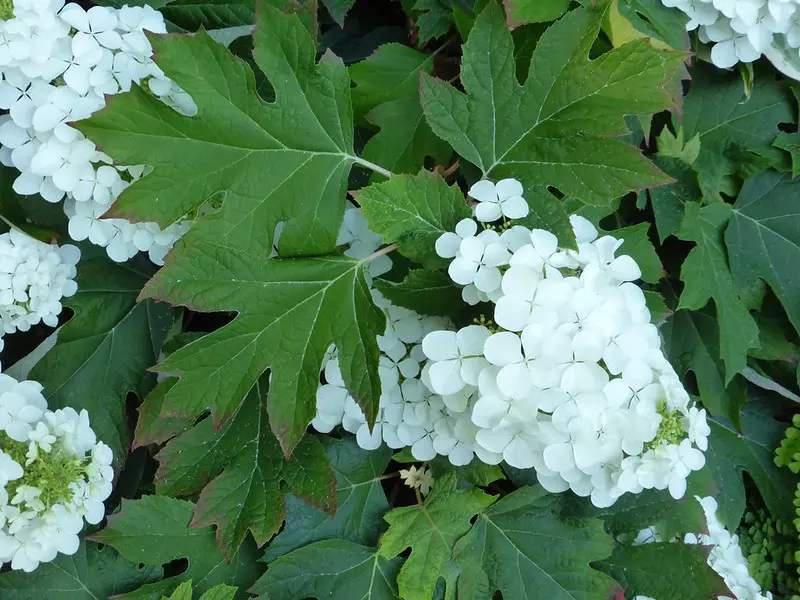
To ensure healthy growth and vibrant blooms, follow these care tips:
Hydrangea quercifolia is a versatile and visually striking shrub that offers beauty throughout the year. Its unique foliage, stunning blooms, and adaptability make it a favourite for gardeners of all skill levels. Whether you have a large landscape or a compact garden, there’s an oakleaf hydrangea variety to suit your needs. With proper care, this plant will enhance your garden for years to come.
Hydrangea quercifolia, or oakleaf hydrangea, is a stunning shrub known for its oak-like leaves, seasonal colour changes, and striking flower panicles. Planting this hydrangea correctly is crucial for ensuring its healthy growth and long-lasting beauty. This guide provides a detailed, step-by-step process to help you plant your oakleaf hydrangea successfully, regardless of the season.
Before planting, proper preparation ensures the success of your oakleaf hydrangea. Here’s what to do:
Select a spot with partial shade, especially in warmer climates, or dappled sunlight beneath a tree canopy. Avoid full shade, as it may reduce flowering.
Ensure the soil is well-draining and enriched with organic matter such as compost. A slightly acidic to neutral pH (5.5–7) is ideal.
Whether planting in spring, summer, or autumn, hydrating your oakleaf hydrangea is an essential step. This process ensures the root ball is fully saturated and reduces transplant shock.
After hydrating your hydrangea, follow these steps to plant it successfully:
Proper aftercare ensures your oakleaf hydrangea establishes well and thrives:
Avoid these errors to ensure your hydrangea grows successfully:
Planting Hydrangea quercifolia correctly ensures a healthy and vibrant shrub that will enhance your garden for years to come. By following these steps, hydrating the plant thoroughly, and providing consistent aftercare, your oakleaf hydrangea will thrive in its new environment. With its unique foliage, stunning blooms, and seasonal interest, this hydrangea is sure to become a cherished part of your garden.
The Hydrangea quercifolia is a stunning shrub that adds texture and colour to any garden. Proper pruning ensures healthy growth, enhances its natural form, and encourages vibrant blooms. This guide focuses on the best time and methods for pruning oakleaf hydrangeas, highlighting why spring is the ideal season and why autumn pruning should be avoided.
Timing is crucial when pruning oakleaf hydrangeas. Unlike some hydrangea varieties, Hydrangea quercifolia should only be pruned in early spring, after the risk of frost has passed.
Pruning in autumn can expose the plant to significant risks:
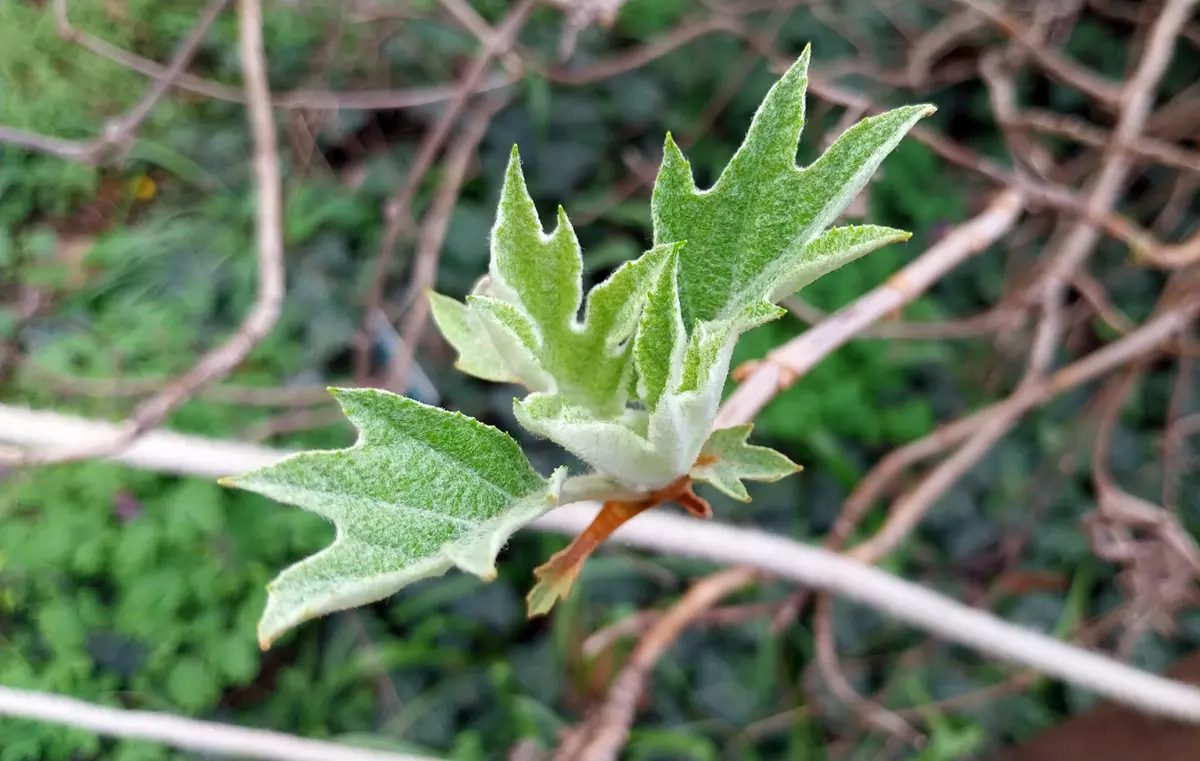
Proper pruning techniques are essential for maintaining the health and appearance of your oakleaf hydrangea. Follow these steps to prune effectively:
To improve air circulation and light penetration, remove any weak or crossing stems. Focus on creating an open and balanced shape.
Lightly trim the plant to maintain its natural form. Avoid heavy pruning to prevent removing flower buds.
Remove all pruned material from the area to prevent the spread of pests or diseases.
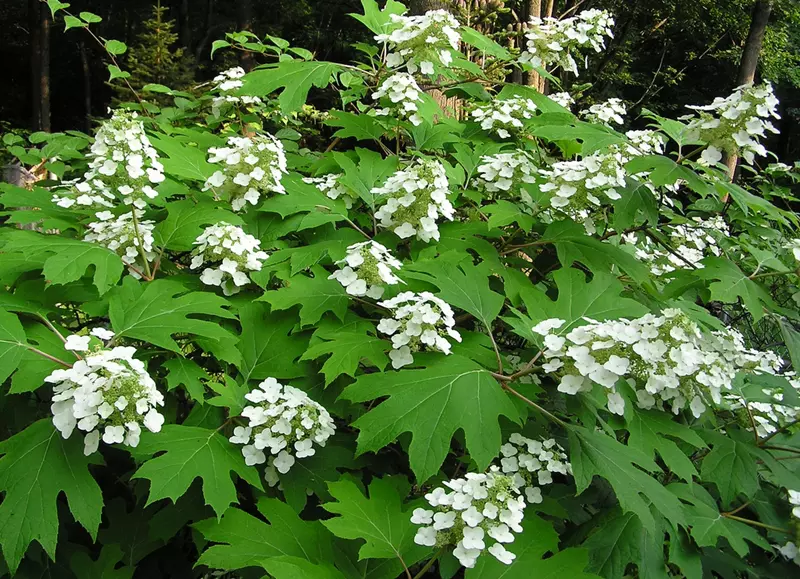
After pruning, proper care ensures the health and vitality of your hydrangea:
Avoid these common pruning mistakes to ensure the health and productivity of your oakleaf hydrangea:
Pruning Hydrangea quercifolia at the right time and with the proper techniques is essential for maintaining its health and beauty. By waiting until early spring and focusing on light, strategic pruning, you can protect your hydrangea from frost damage and ensure vibrant blooms year after year. With these tips, your oakleaf hydrangea will thrive and become a stunning focal point in your garden.
The oakleaf hydrangea is a stunning deciduous shrub loved for its unique foliage and dramatic seasonal colour changes. Providing the right soil conditions is crucial for the health and vitality of this plant. In this guide, we’ll explore the ideal soil for oakleaf hydrangeas and emphasise the importance of mulching in maintaining optimal growth.
Oakleaf hydrangeas are adaptable but thrive best in specific soil conditions:
Hydrangea quercifolia prefers fertile, well-draining soil. It does well in:
A slightly acidic to neutral pH (5.5–7) is ideal for oakleaf hydrangeas. Testing the soil with a pH kit can help you make necessary adjustments:
Well-draining soil is essential to prevent root rot. Avoid planting in areas where water pools after rain.
Mulching plays a vital role in maintaining soil health and supporting the growth of Hydrangea quercifolia. Here’s why mulching is essential:
Before planting oakleaf hydrangeas, take the following steps to prepare the soil:
Once planted, ongoing soil care is essential for long-term success:
If your oakleaf hydrangea shows signs of stress, the soil may be the issue. Here are common problems and how to address them:
Symptoms: Yellowing leaves and stunted growth. Roots may appear soggy or rotting.
Solution: Amend soil with organic matter and create raised beds or plant on a slope to improve drainage.
Symptoms: Pale or discoloured leaves and weak growth.
Solution: Apply a balanced fertiliser and replenish organic mulch to restore soil nutrients.
Providing the right soil conditions and incorporating regular mulching are essential for the health and beauty of Hydrangea quercifolia. By ensuring fertile, well-draining soil and maintaining a layer of organic mulch, you can support robust growth and vibrant blooms. With proper soil preparation and care, your oakleaf hydrangea will thrive and become a striking feature in your garden for years to come.
Hydrangea quercifolia is a stunning shrub that adds charm and structure to any garden. Propagating this hydrangea is a rewarding way to expand your garden or share its beauty with others. This article explores three reliable methods for propagating oakleaf hydrangeas: layering, cuttings, and division, with detailed steps for each.
Propagation is an excellent way to grow more of this beautiful shrub for your garden or to share with friends. Key benefits include:
Here are the three most effective methods for propagating Hydrangea quercifolia.
Layering is a simple, low-risk method where a branch is encouraged to root while still attached to the parent plant.
Tip: Layering works best in spring or early summer when the plant is actively growing.
Propagating oakleaf hydrangeas from cuttings is a more challenging but effective method for producing multiple new plants.
Division is suitable for established plants with a spreading root system. It’s best performed in early spring or autumn when the plant is dormant.
Propagating Hydrangea quercifolia is a rewarding way to expand your garden or share this beautiful plant with others. Whether you choose layering for simplicity, cuttings for volume, or division for established plants, these methods offer effective ways to create healthy new hydrangeas. With proper care and patience, your oakleaf hydrangea propagation efforts will yield thriving plants that enhance your garden for years to come.
Hydrangea quercifolia, or oakleaf hydrangea, is a resilient shrub that provides stunning seasonal beauty. However, to ensure it survives harsh winter conditions, proper care and preparation are essential. This guide explores the best methods for winter protection, highlighting the importance of mulching, timing of pruning, and soil nutrient management to safeguard your hydrangea.
Mulching is one of the most effective ways to protect your oakleaf hydrangea during winter. A thick layer of mulch insulates the roots, helping the plant withstand temperature fluctuations and freezing conditions.
Proper pruning is essential for maintaining the health and appearance of your hydrangea, but timing is critical. Avoid pruning in autumn, as this can expose the plant to unnecessary risks.
Wait until early spring, once the risk of frost has passed. At this time, remove any dead or damaged wood, shape the plant, and thin out overcrowded branches to improve airflow and light penetration.
Ensuring the soil is nutrient-rich helps your hydrangea survive the winter and emerge healthy in spring. Focus on the following nutrients:
Incorporate compost or well-rotted manure into the soil to improve fertility and structure. Organic matter enhances water retention while allowing proper drainage.
Potassium strengthens cell walls, improving the plant’s cold tolerance. Apply a balanced fertiliser with a higher potassium content in late autumn.
Supports root development and energy storage, critical for overwintering. Use bone meal or a phosphorus-rich fertiliser for best results.
Ensure the soil is well-draining to prevent waterlogging, which can lead to root rot during cold, wet months.
In addition to mulching and soil care, consider these measures for extra protection:
Avoid these common errors to protect your hydrangea during winter:
Proper winter protection ensures that your Hydrangea quercifolia remains healthy and ready to thrive when spring arrives. By applying a thick layer of mulch, delaying pruning until spring, and enriching the soil with essential nutrients, you can safeguard your hydrangea against harsh weather conditions. With the right care, your oakleaf hydrangea will reward you with vibrant growth and stunning blooms year after year.
Oakleaf hydrangea is a robust and versatile shrub. However, like all plants, it can be vulnerable to certain diseases. Understanding how to identify, prevent, and treat these issues is essential to maintaining a healthy and thriving hydrangea. This guide covers common diseases affecting oakleaf hydrangeas, prevention strategies, and effective treatment methods, including organic and conventional approaches.
Oakleaf hydrangeas are generally hardy but may encounter the following diseases:
Symptoms: A white, powdery coating appears on leaves, stems, and flowers, often leading to leaf distortion and reduced vigour.
Causes: High humidity, poor air circulation, and warm temperatures create ideal conditions for this fungal infection.
Symptoms: Small, dark brown or black spots form on leaves, sometimes surrounded by yellow halos. Severe cases can result in premature leaf drop.
Causes: Fungal or bacterial pathogens spread by water splash during rainfall or irrigation.
Symptoms: Wilting, yellowing leaves, and stunted growth. Roots appear brown and mushy when inspected.
Causes: Overwatering or poor drainage leads to fungal pathogens attacking the roots.
Symptoms: Orange or rust-coloured pustules appear on the undersides of leaves, which may eventually cause leaf drop.
Causes: Fungal spores spread by wind or water in warm, humid conditions.
Prevention is the best defence against diseases. Follow these strategies to keep your hydrangea healthy:
Prune regularly to thin out dense growth and improve airflow around the plant. This reduces humidity and discourages fungal growth.
Avoid overhead watering. Instead, water at the base of the plant to keep foliage dry and minimise the spread of waterborne pathogens.
Ensure the soil is well-draining and enriched with organic matter. Healthy soil supports robust plants that are more resistant to disease.
Apply a layer of organic mulch to suppress weeds, retain soil moisture, and reduce water splash, which can spread pathogens.
Inspect your hydrangea frequently for early signs of disease. Prompt intervention can prevent minor issues from escalating.
If your oakleaf hydrangea shows signs of disease, take immediate action with these treatment methods:
Maintain a proactive approach to disease management with these long-term practices:
While Hydrangea quercifolia is generally hardy, it can occasionally face diseases such as powdery mildew, leaf spot, and root rot. By focusing on prevention through proper watering, pruning, and soil care, you can minimise the risk of disease. When issues arise, prompt treatment with organic or conventional methods can restore your hydrangea to health. With consistent care, your oakleaf hydrangea will thrive and remain a stunning feature in your garden.
Hydrangea quercifolia is a resilient and beautiful shrub that can thrive in a variety of garden settings. However, pests can occasionally pose challenges, affecting the health and appearance of your plant. This guide focuses on eco-friendly pest management techniques, offering natural and sustainable solutions to keep your oakleaf hydrangea pest-free.
While oakleaf hydrangeas are generally hardy, they can occasionally attract the following pests:
Symptoms: Clusters of small, soft-bodied insects on new growth, often leaving behind sticky honeydew that can lead to sooty mould.
Causes: Aphids thrive in warm, humid conditions and are often attracted to tender new shoots.
Symptoms: Fine webbing, yellow or bronze speckling on leaves, and eventual leaf drop.
Causes: Hot, dry conditions favour spider mite infestations.
Symptoms: Hard, shell-like bumps on stems or leaves, often accompanied by yellowing foliage and sticky residue.
Causes: Scale insects are attracted to stressed or overcrowded plants.
Symptoms: Large, irregular holes in leaves, particularly in damp or shaded areas.
Causes: Slugs and snails are most active in moist environments, particularly at night.
Prevention is key to managing pests without relying on chemicals. Implement these eco-friendly strategies to protect your oakleaf hydrangea:
Attract natural predators like ladybirds, lacewings, and parasitic wasps to your garden by planting companion plants such as marigolds, dill, and fennel.
Regularly prune dense growth to improve airflow, reducing humidity levels that attract pests like spider mites.
Avoid overhead watering, which can create favourable conditions for pests. Instead, water at the base of the plant to keep foliage dry.
Apply organic mulch around the base to regulate soil moisture, discourage slugs, and reduce weed competition.
Regularly check your plant for signs of pests and take early action to prevent infestations from spreading.
If pests are already present, try these natural and sustainable treatments:
Neem oil is a natural pesticide effective against aphids, spider mites, and scale insects. Mix neem oil with water according to the manufacturer’s instructions and spray affected areas weekly.
Mix 1 tablespoon of liquid soap with 1 litre of water and spray directly on pests. This suffocates soft-bodied insects like aphids and spider mites.
Remove scale insects and slugs by hand. Use a cotton swab dipped in rubbing alcohol to dislodge scale insects from stems.
Sprinkle food-grade diatomaceous earth around the base of the plant to deter slugs and other crawling pests. This natural substance damages their exoskeletons, causing dehydration.
For slugs and snails, place shallow dishes filled with beer near the hydrangea. The pests are attracted to the beer and become trapped.
Maintaining a healthy garden environment is crucial for preventing pest issues over time. Follow these tips:
Eco-friendly pest management ensures your Hydrangea quercifolia remains healthy while supporting a sustainable garden. By focusing on prevention, attracting beneficial insects, and using natural treatments, you can manage pests effectively without harming the environment. With these tips, your oakleaf hydrangea will continue to thrive and enhance your garden’s beauty.
The Hydrangea quercifolia is a stunning shrub that offers unique foliage, showy flowers, and year-round interest. Companion planting with oakleaf hydrangeas not only enhances their beauty but also promotes a healthy and balanced garden ecosystem. This guide explores the best companion plants, design ideas, and practical tips for combining them in your landscape.
Companion planting involves grouping plants that complement each other aesthetically and functionally. Benefits of companion planting with oakleaf hydrangeas include:
When choosing companion plants for Hydrangea quercifolia, consider its partial-shade preference, soil needs, and natural woodland aesthetic. Here are some excellent options:
Thoughtful planning ensures your oakleaf hydrangea and its companions create a balanced and beautiful landscape. Here are some design tips:
Arrange plants by height, with taller shrubs like rhododendrons at the back, oakleaf hydrangeas in the middle, and ground covers or spring bulbs at the front.
Combine the bold, lobed leaves of the hydrangea with the delicate textures of ferns or the smooth surfaces of hosta leaves for visual interest.
Pair the hydrangea’s autumn foliage with shrubs and perennials that change colour in harmony, such as red or orange azaleas.
Integrate pathways or stepping stones bordered by hydrangeas and companion plants to create a serene, woodland-style garden.
To ensure all plants thrive together, follow these care tips:
Companion planting with Hydrangea quercifolia not only enhances its beauty but also promotes a thriving and harmonious garden. By carefully selecting plants with complementary textures, colours, and growth habits, you can create a landscape that is both functional and visually appealing. With proper care, your oakleaf hydrangea and its companions will provide year-round enjoyment and transform your garden into a stunning sanctuary.
Hydrangea quercifolia, or oakleaf hydrangea, is a versatile and visually stunning shrub that can transform any garden. Its unique, lobed foliage, cone-shaped flower panicles, and seasonal colour changes make it a standout feature in landscaping. This guide explores how to use oakleaf hydrangeas effectively in garden design, offering inspiration and practical tips for placement and care.
Oakleaf hydrangeas are an excellent choice for a variety of garden styles. Here’s why:
Choosing the right location is essential to highlight the beauty of Hydrangea quercifolia. Consider these ideas:
Oakleaf hydrangeas thrive in woodland settings, where their natural, textured appearance complements ferns, hostas, and other shade-loving plants.
Use them as foundation shrubs to soften the lines of buildings. Their medium to large size works well as a transition between taller structures and low-growing ground covers.
Plant them along garden borders for a striking display of flowers and foliage. Their vibrant autumn colour provides a dramatic edge in seasonal transitions.
Place oakleaf hydrangeas as focal points in garden beds or near seating areas to draw attention to their unique features.
Pairing Hydrangea quercifolia with the right companion plants can elevate your garden design:
Incorporate Hydrangea quercifolia into your landscape with these creative ideas:
Combine oakleaf hydrangeas with plants of varying heights to create a layered effect. Use them as a middle layer between tall trees and low ground covers.
Pair the hydrangea’s white flowers and autumn foliage with plants that echo its seasonal tones, such as red azaleas or orange coneflowers.
Place oakleaf hydrangeas in informal clusters for a natural, woodland-style appearance. Surround them with grasses and wildflowers for a meadow-like effect.
Use smaller cultivars like ‘Pee Wee’ in containers or near patios to create intimate garden spaces.
To keep your oakleaf hydrangea thriving and looking its best, follow these care guidelines:
Choose from these popular Hydrangea quercifolia cultivars to suit your garden design needs:
Hydrangea quercifolia is a versatile and visually stunning plant that enhances any garden design. Whether used in borders, woodland gardens, or as a focal point, its unique characteristics and adaptability make it a valuable addition to any landscape. By combining it with complementary plants and following proper care practices, you can create a garden that is both functional and breathtaking.

Learn how to master oakleaf hydrangea propagation with this step-by-step guide. Discover the best methods, timing, and care tips to grow healthy Hydrangea quercifolia plants.
Read More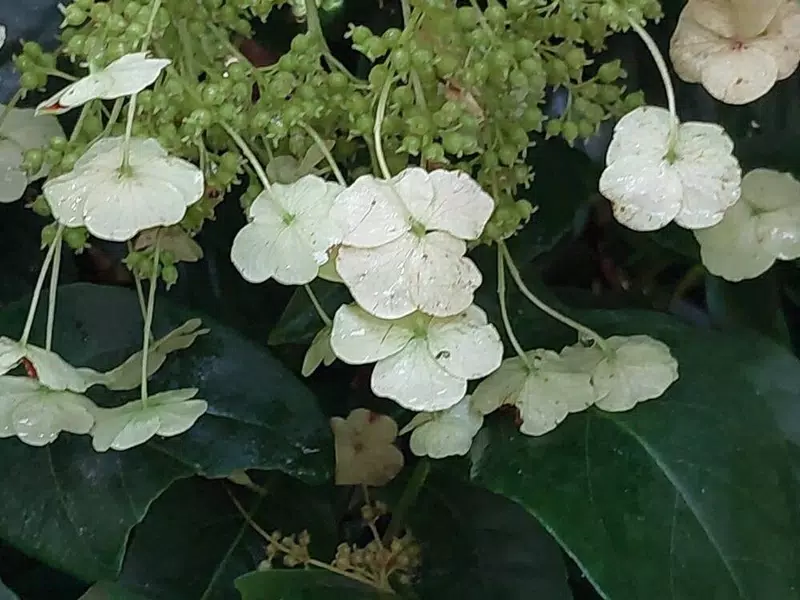
A complete guide to Hydrangea seemannii, including planting, pruning, soil adjustments, eco-friendly pest management, propagation, and garden design ideas.
Read More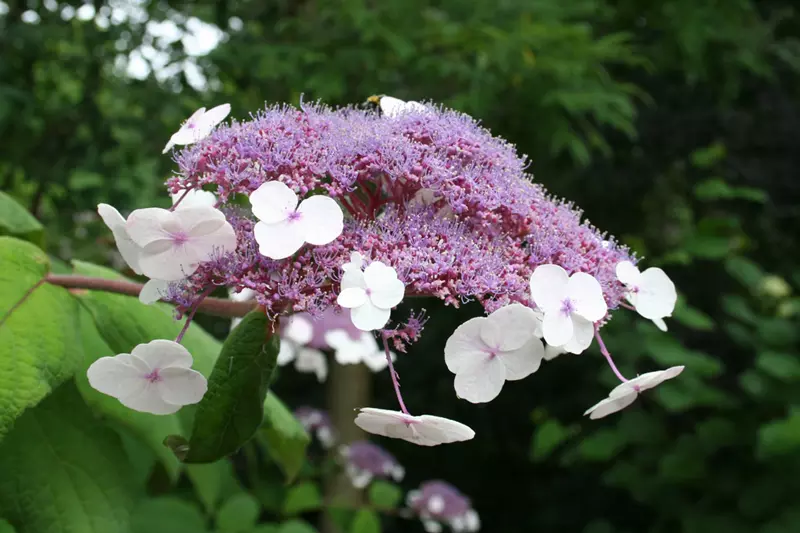
A complete guide to Hydrangea aspera, including planting, pruning, soil adjustments, eco-friendly pest management, propagation, and garden design ideas.
Read More